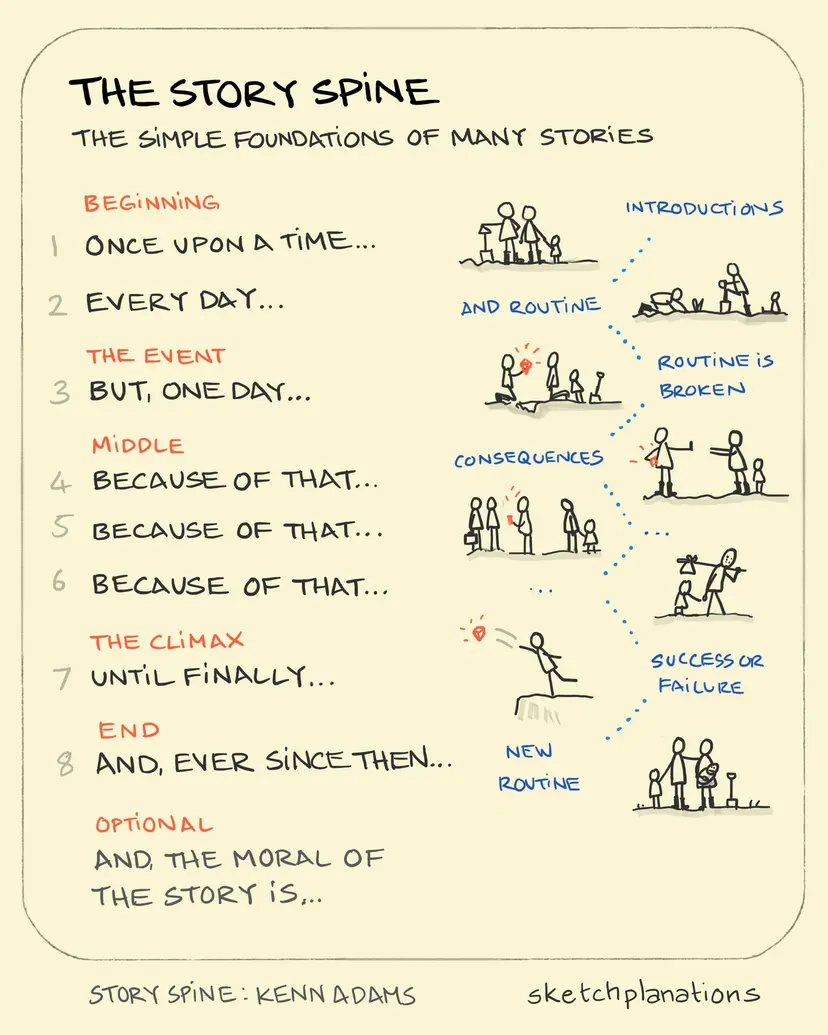A story spine is a simple yet powerful storytelling framework, consisting of a series of connected phrases or “spines” that guide the progression of a narrative. It provides a blueprint for writers to create engaging stories with a clear beginning, middle, and end.
The story spine concept was originally developed by playwright Kenn Adams in his book How to Improvise a Full-Length Play: The Art of Spontaneous Theater. Pixar, the renowned animation studio, later borrowed and adapted this concept for their storytelling process.
You can create a story spine using a Mad Libs-like template to capture the core frames of a story:
- Once upon a time… sets the initial context.
- Every day… establishes the routine.
- One day… introduces the inciting incident.
- Because of that… describes the initial consequences.
- Because of that… describes further consequences or actions.
- Because of that… describes further consequences or actions.
- Until finally… indicates the turning point or resolution.
- And ever since that day… describes the new status quo.

Adaptations of the story spine template
Job Moves 📕 adapts the story spine for career narratives. It recommends using the story spine to craft a personal career narrative that communicates an individual’s professional journey and aspirations. This adaptation includes having individuals create two story spines: one reflecting their past career trajectory and another describing their desired future.
- Past Trajectory Spine: This spine focuses on a key transition that brought an individual to their present career position. It helps to articulate how they moved from their initial thoughts about switching jobs to the change they made.
- Future Aspirations Spine: This spine outlines what an individual wants next in their career. It may be more abstract than the past spine, but it should clearly show how they envision their future role and how it aligns with their motivations and skills.